Legends were born of her while she lived, and barely any exist that do not highlight her beauty and kindness. And this is one of the reasons that all facts about her our guarded by a firm layer of admiration.
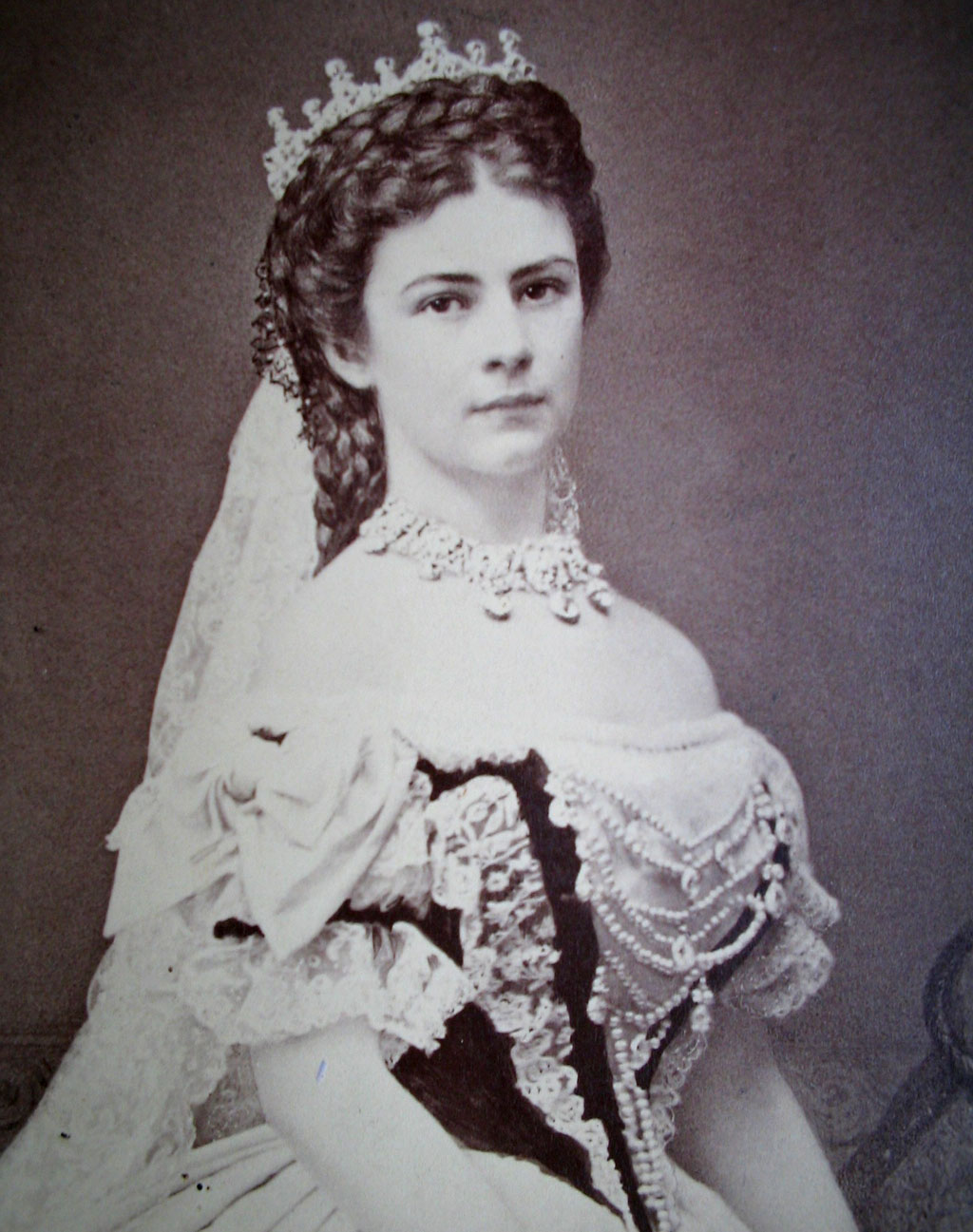
Queen Consort Elizabeth in 1867 (Source: Wikimedia)
Sisi certainly liked to spend time in Buda, and that Alajos Hauszmann took her requests into account when the expansion and remodelling of the Royal Palace of Buda Castle began in 1890. In January 2021, the archaeological excavations carried out by the National Hauszmann Program uncovered a decorative element (a lion-relief) of a building built specifically at the request of the Queen Consort within the Southern Roundel.
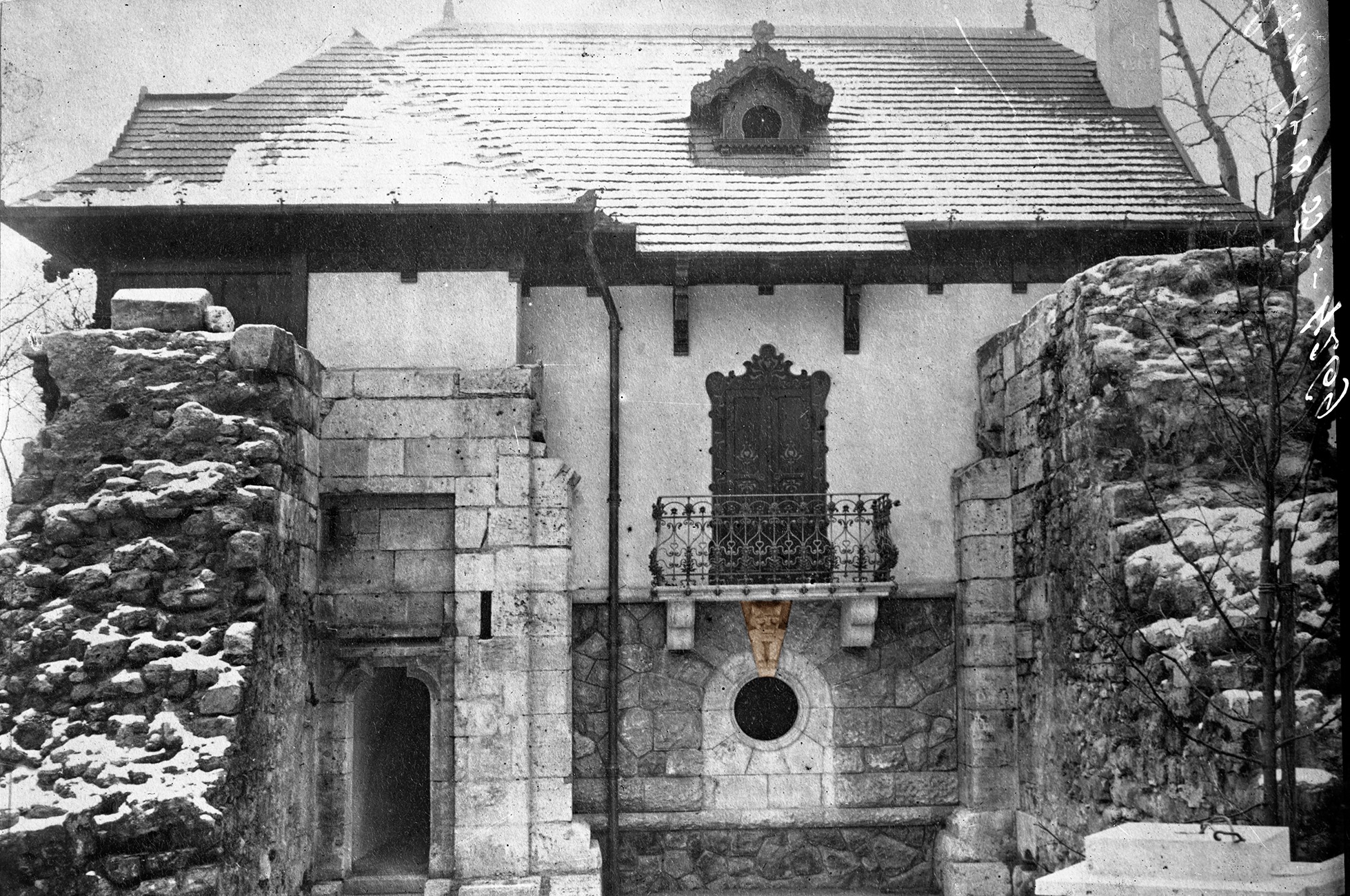
The facade of Queen Elizabeth's rest house, with the newly-found relief depicting a female lion under the balcony (Photo: Várkapitányság Nzrt./Hungarian Academy of Arts, Hungarian Museum of Architecture and Monument Protection Documentation Centre )
The small building also called the garden house, small house and Hungarian house, stood on the site of the gate tower of today's Southern Roundel. Its decorations and furnishings were a fine example of folk art-influenced Hungarian Art Nouveau.
“The furnishings of this house were completed in the Hungarian folk style at the special request of the lamented Queen Consort Elizabeth. It was here that the great lady loved to retire in the company of her lady-in-waiting, Ida Ferenczy, who read her the works of our great poets.”
– wrote Alajos Hauszmann in his A magyar királyi vár ('The Hungarian Royal Castle'). Although the term “loved to retire” may not be the most appropriate, the building’s furnishings were not completed until years after the Queen’s tragic death in 1898. Sisi herself is said to have visited the house once, in the summer before her death.
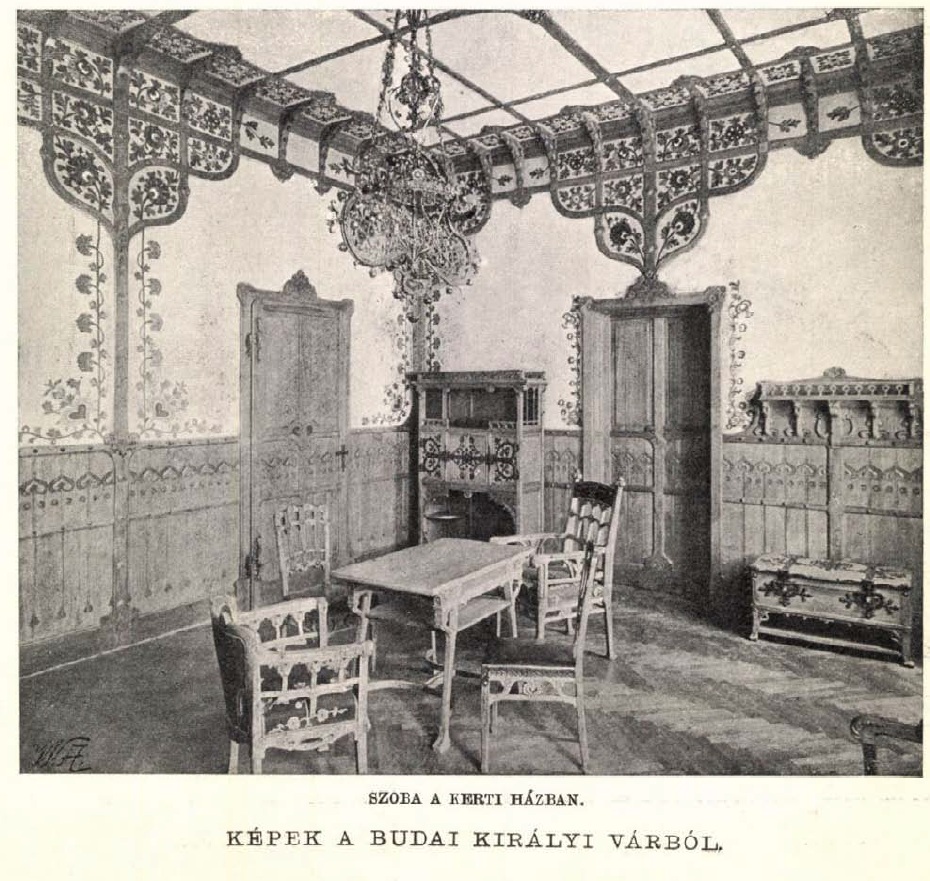 Sisi never saw the completed decoration of the house (Photo: Vasárnapi Ujság, 30 August 1903)
Sisi never saw the completed decoration of the house (Photo: Vasárnapi Ujság, 30 August 1903)
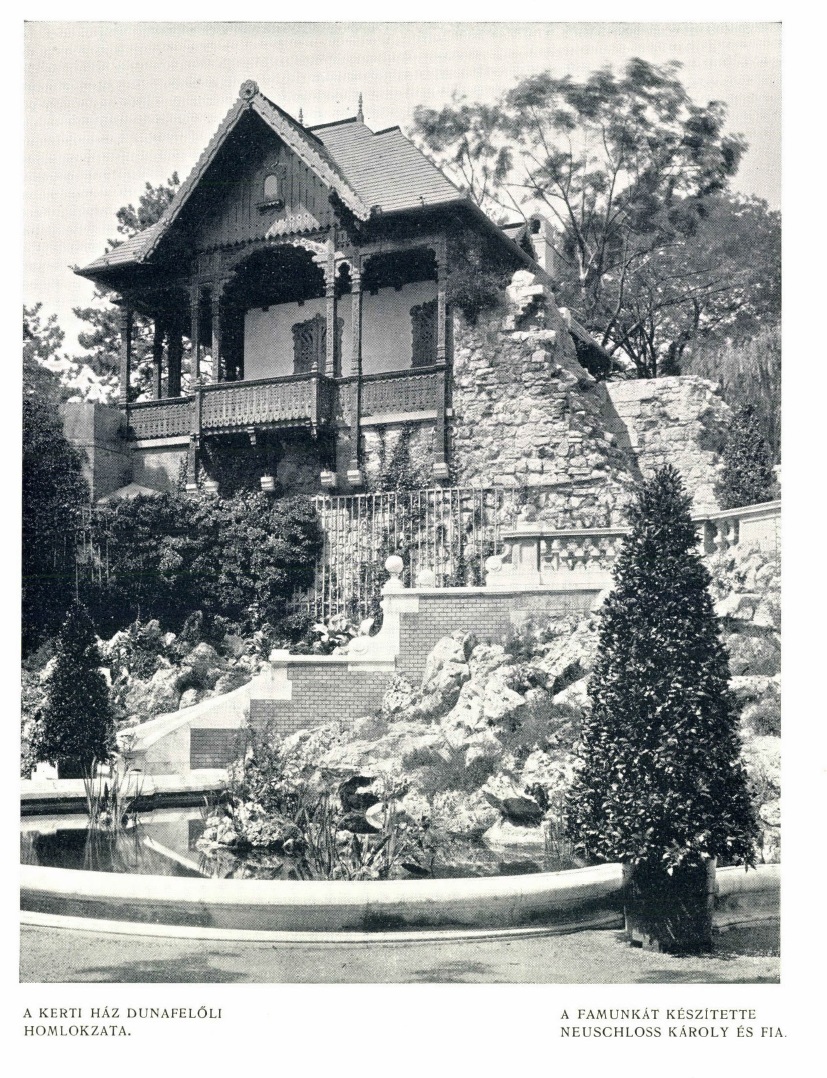
The rest house near the Great Southern Roundel, which was decorated in the Hungarian-style at the Queen's request (Photo: Magyar Iparművészet, 1903/4)
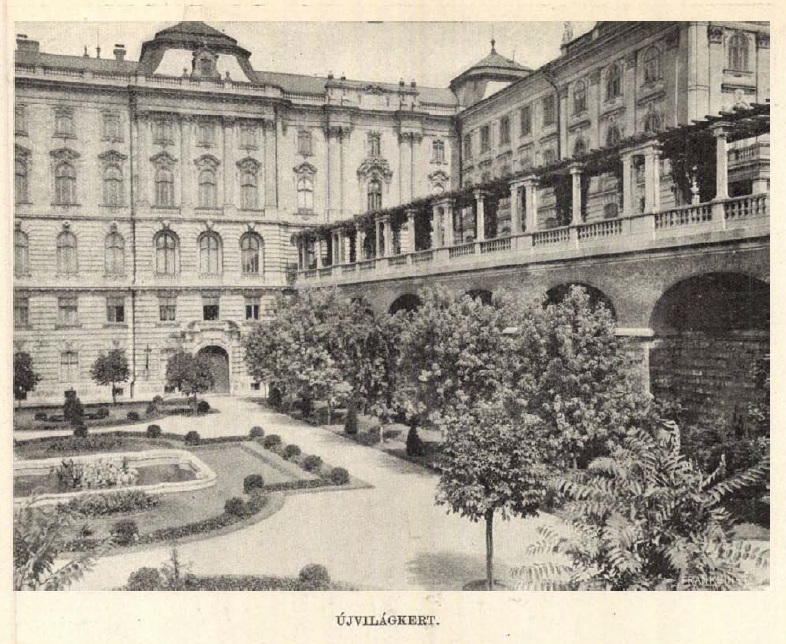
The New World Garden, with the pergola of Queen Elizabeth above it on the terrace between the Krisztinaváros wing of the palace and the southernmost building (Photo: Vasárnapi Ujság, 22 July 1906)
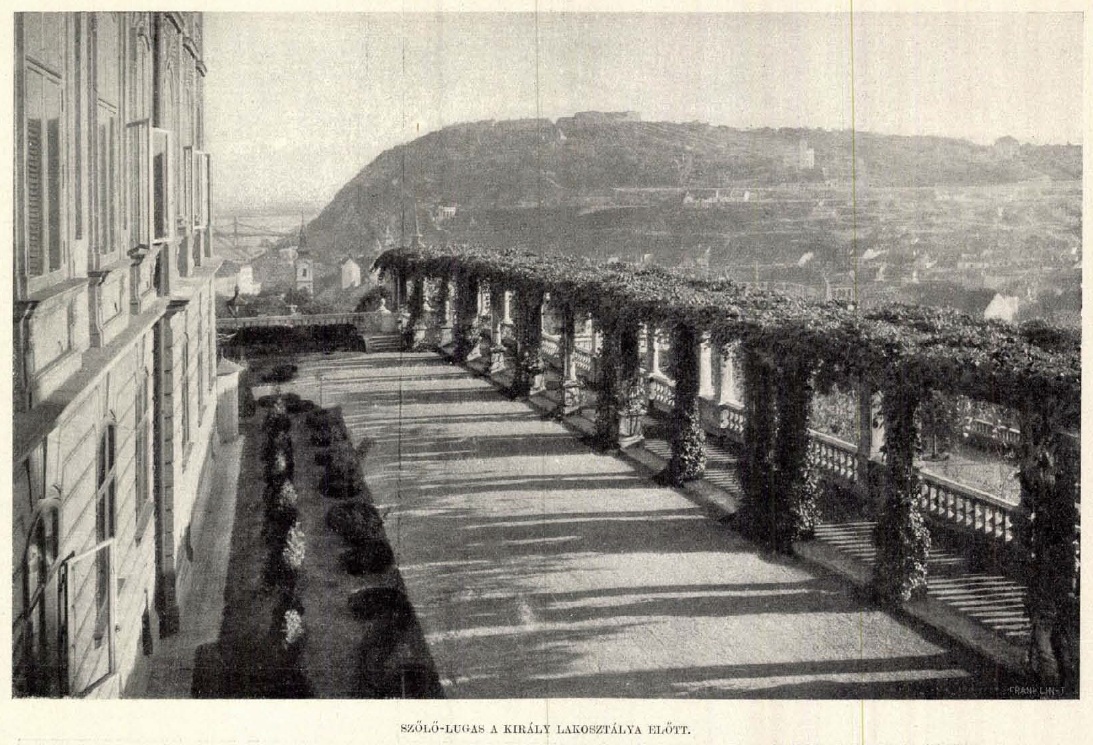
Queen Elizabeth's pergola seen from the palace, with the Tabán and Gellért Hill in the background (Photo: Vasárnapi Ujság, 5 January 1913)
The Queen's love of the garden was also reflected in the pergola that stood on the palace terrace in front of Sisi's room, in front of the western facade of the southernmost building in the complex. The area under the pergola, now referred to as the Southern Gardens (Déli kertek), which also housed the Queen's rest house, was impressive in itself. "Queen Elizabeth's Favourite Garden." "At the foot of the Royal Palace, which would fit into the tales of the One Thousand and One Nights, on the southernmost point of Castle Hill in Buda," as a writer for the A kert periodical put it in the 15 November 1897 issue. It is little wonder that the Queen spent most of October 1897 here.
“I there was no rain, she would begin walking through the gardens at six in the morning, accompanied by her favourite lady-in-waiting, Ida Ferenczy. She admired the beautiful view from morning to evening, cared for the flowers and pondered the melancholy autumn mood, from which painful memories of the past floated towards her... And from these painful memories, she ran to forget-me-nots and her blue trumper gentians, and the kind edelweis..."
What were the painful memories to which the author refers? Sisi shared the secrets of her soul with very few people.
She fell in love with Buda at first sight.
The queen was happy to spend time here and even learned Hungarian perfectly.
Sisi first visited Buda in 1857 (in the company of Franz Joseph). Although her beauty was already admired, the post-revolution retaliations were still too fresh in the memory of the city for them to see her as more as the wife of the hated emperor. Even then, however, Elizabeth sympathised with the kind atmosphere of “old Budavár” after the over-regulated, protocol-filled luxury of the Hofburg in Vienna. She even enjoyed the Csárdás danced at the balls, which the members of the Viennese elite watched in silent astonishment.
Sisi started learning Hungarian. When the royal couple came to Buda for the second time on 29 January 1866, she was fluent enough to speak with Gyula Andrássy for a quarter of an hour at the court ball held in the Royal Palace.
The beauty of the balls
Balls in Buda traditionally began at eight. Elizabeth spent hours preparing to ensure that she impressed everyone and swooped through the room to collect admiring glances. While her husband talked to the selected guests, she moved into the adjoining White Hall with the ladies. Who had a challenge cut out for them:
as the Empress typically spoke softly, “they were only able to understand her words with the utmost attention. As no one dared to ask her to repeat what she had said, her conversations with strangers were often comic games of questions.
The Countess Larisch recalled.
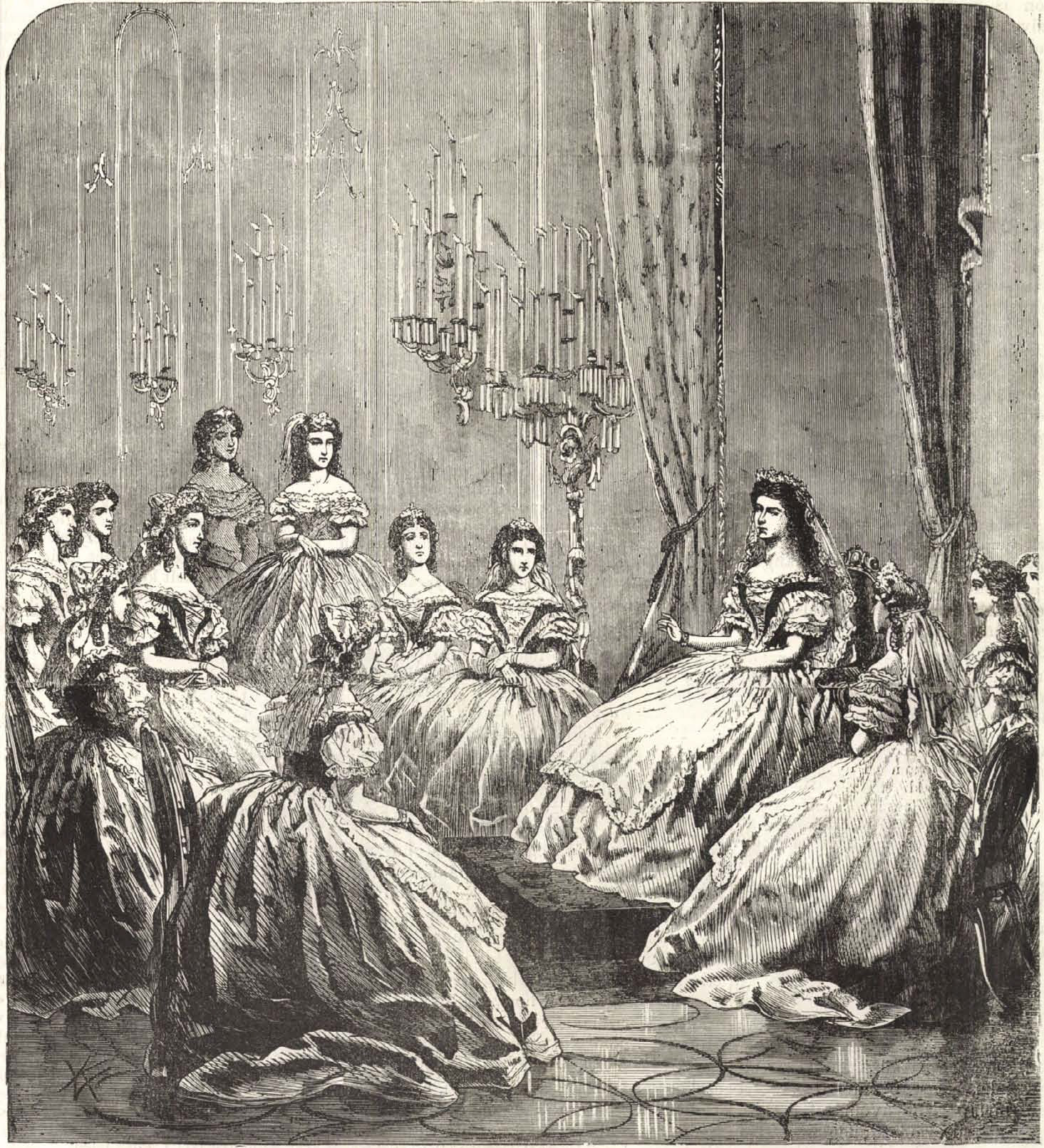
Sisi in the company of her ladies in waiting in the Royal Palace of Buda Castle (Source: Vasárnapi Ujság, 25 March 1866)
A refuge from war
The visit highlighted that the building (which had not housed an official court for several years since Archduke Albrecht moved out of the building), was in need of repairs and expansion, as only half of the court, “in which even the porter is a great lord”, could fit inside as Képes-Ujság noted in its 16 February 1866 issue. The furnishings of the palace were incomplete, all artworks were returned to the Treasury in Vienna with the departure of the Archduke, and even the cutlery had to be brought from Vienna for the 1866 visit.
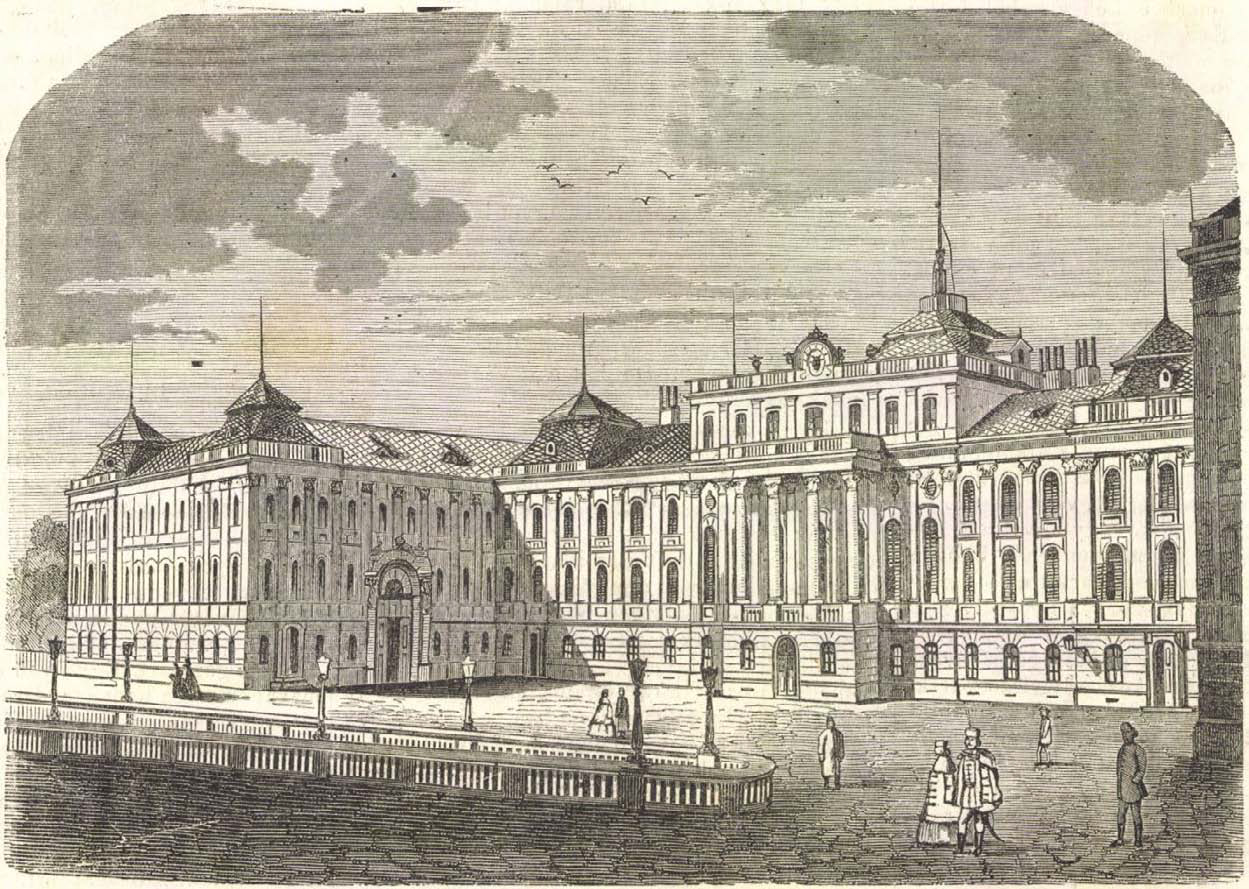
For most of Sisi's life, the royal palace of Buda looked like this. The Krisztinaváros wing was completed in the 1890s. The drawing shows the building's western façade, the space in front of it is now the Lion's Court (Source: Vasárnapi Ujság, 18 February 1866).
However, due to the Austro-Prussian war that broke out in 1866, reconstruction was out of the question for the time being. Nevertheless, Buda Castle was well-used. As enemy forces approached Vienna, the imperial court moved its most important values and documents to Buda, and, of course, Sisi came too. During her refuge in Hungary, Elizabeth lived surrounded by the enthusiastic interest of society in Pest-Buda. Her lady-in-waiting and confidant, Ida Ferenczy, a supporter of the Deák party and Count Andrássy, spoke to her about the Compromise often. It is also due to this that the Queen was more enthusiastic than other members of the imperial family in settling the “Hungarian question”, which finally happened in 1867, with the creation of the Austro-Hungarian Monarchy. The Queen remained friendly with Andrássy, they corresponded and spoke in Hungarian. Sisi is even said to have visited the Sándor Palace, which served as the residence of the Prime Minister, several times.
Coronation in Matthias Church
The biggest event, however, was the coronation of the royal couple on 8 June 8 1867. Buda Palace, with its 200 rooms, proved very small for the 921-strong imperial court. The Emperor was even forced to reserve entire hotels to accommodate everyone.
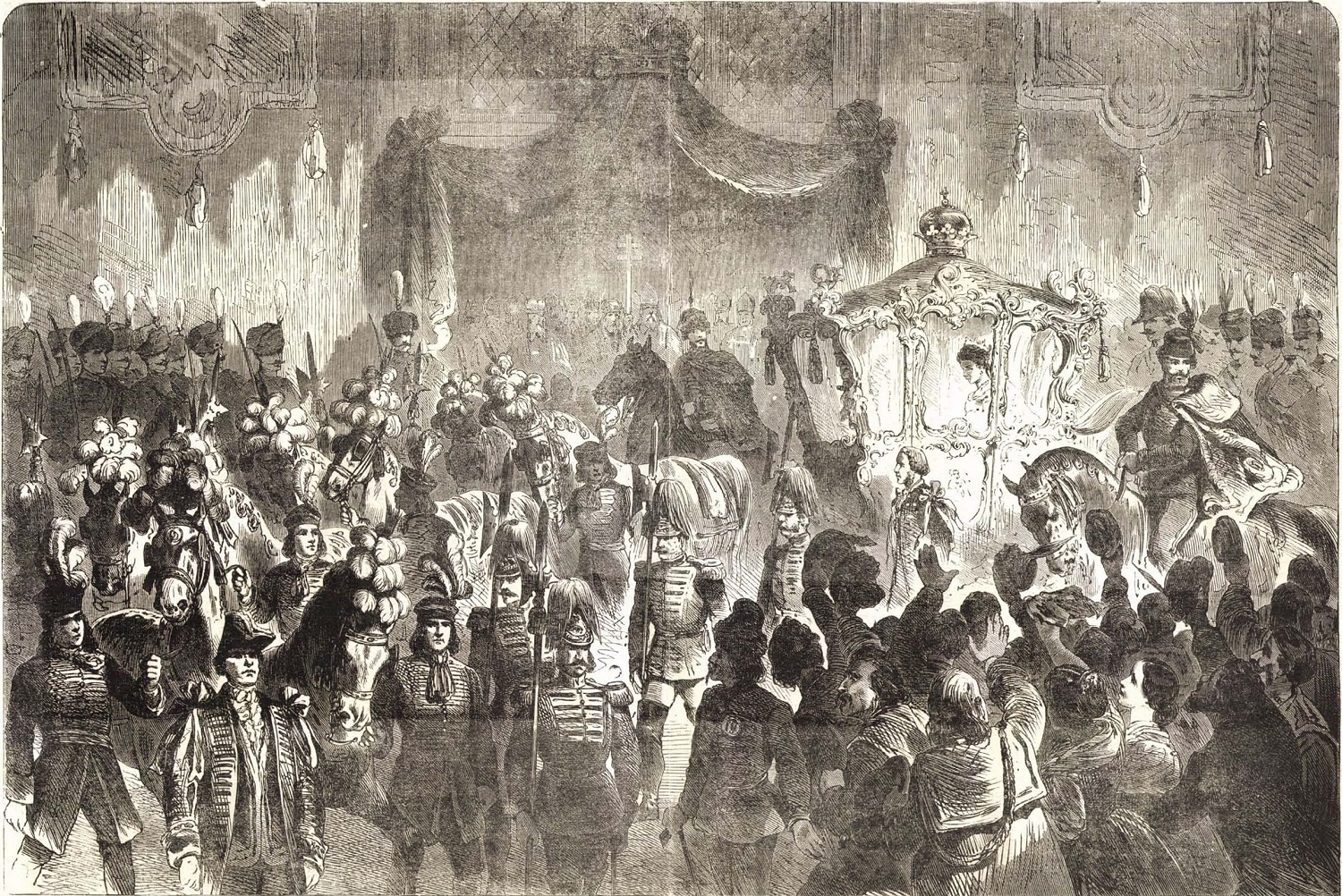
The highlight of the coronation: Sisi arrives in front of Matthias Church in her carriage (Source: Vasárnapi Ujság, 21 July 1867)
The celebratory procession with the royal couple started from the royal palace in Buda and headed to Matthias Church. The most anticipated person besides the emperor was, of course, Sisi, who arrived in the ornamental carriage used by Queen Maria Theresa during her coronation, “adorned with paintings by Rubens,” as noted in the 9 June 1867 issue of the Pesti Napló.
The queen was dressed in a Hungarian-style, “silk dress richly embroidered with white silver,” and wore a coronet filled with diamonds. As was tradition. The Holy Crown was only placed on the head of the King. Gyula Andrássy, acting as Palatine, touched the Crown to the Queen Consort's shoulder.
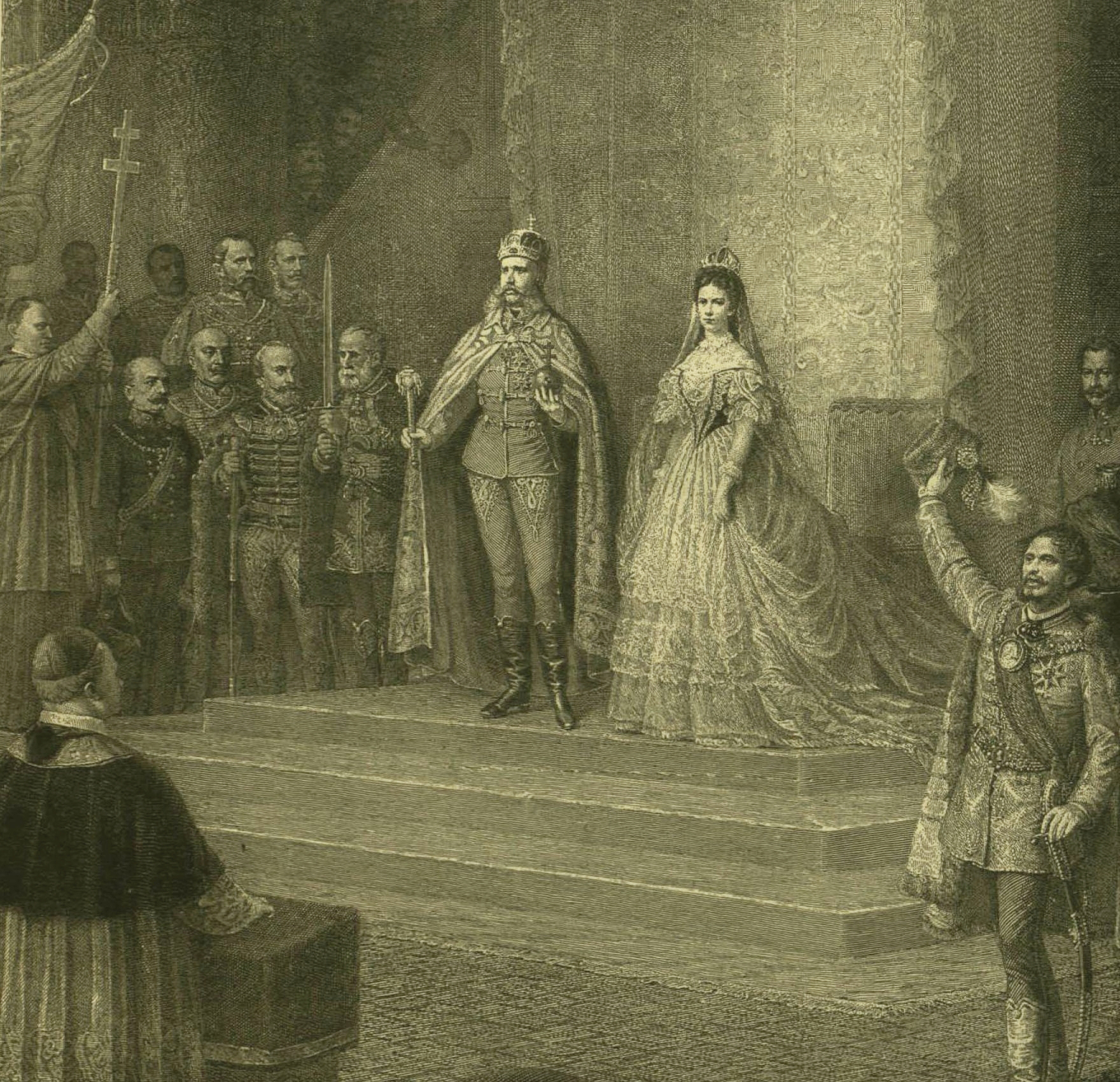
Franz Joseph and Queen Elizabeth after the coronation, a painting by Ede Engerth based on an etching by Jenő Doby (Source: Vasárnapi Ujság, 18 September 1898)
The queen never saw the new palace completed
The Hungarian nation granted the royal couple Gödöllő palace on the occasion of their coronation. This later became one of Sisi's favourite homes. However, she still visited Buda often (celebrations were often held on her name day and mass also celebrated in her honour). However, she never saw the large-scale expansion of the Royal Palace of Buda Castle, which began in the 1890s, completed, as she fell victim to an assassination on 10 September 1898 in Geneva.
Immediately after her unexpected death, the idea of erecting a statue of her, originally designed for Szent György Square, was raised but did not materialise. The work was finally erected in 1932 on what is now Március 15-e Square. The statue currently stands on Döbrentei Square.
Although her body was laid to rest in the Habsburg crypt in Vienna, part of her soul undeniably remained in Buda, preserving the memory of how the unknown Bavarian princess became the queen of Hungarians.
Cover photo: Queen Consort Elizabeth in her Hungarian coronation dress in an 1869 painting by Bertalan Székely

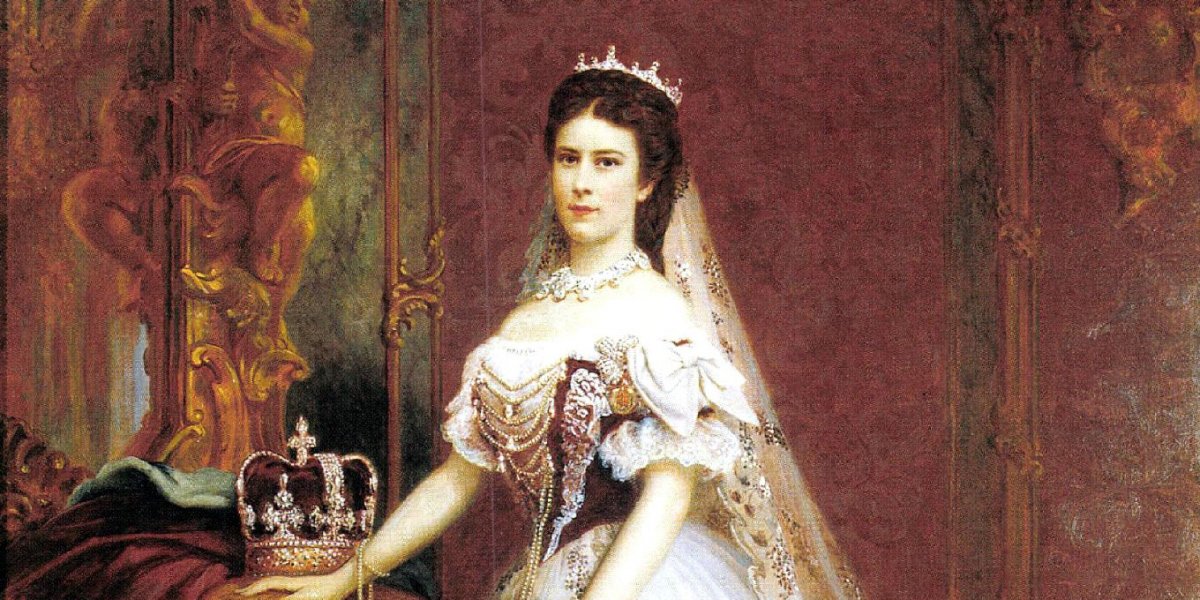
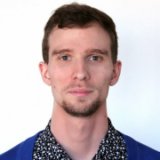



































Hozzászólások
Log in or register to comment!
Login Registration